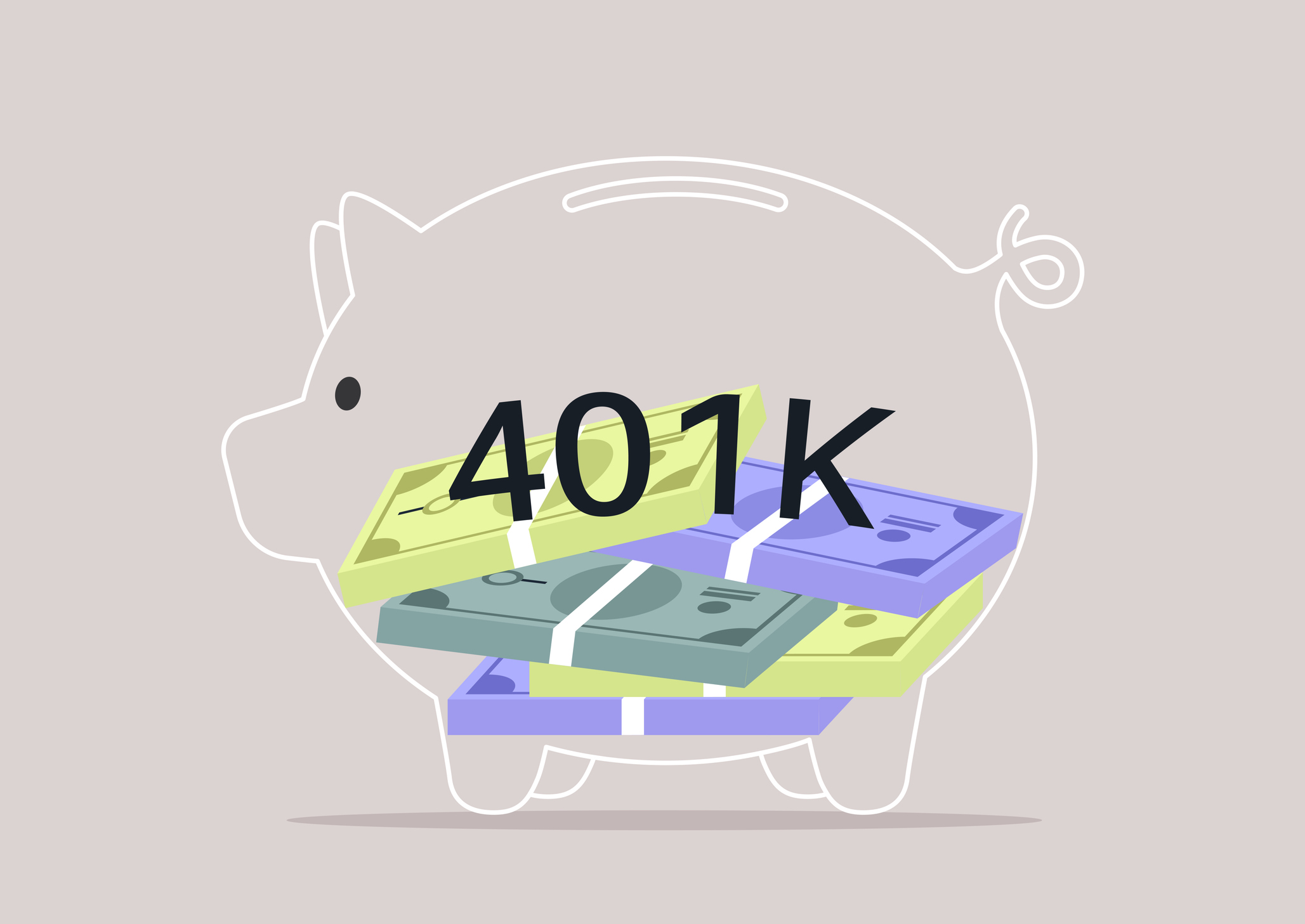If you have helped children or grandchildren with college costs, you are probably already familiar with 529 plans, the tax-advantaged education savings accounts offered by states and educational institutions. The money grows tax-free over the years until you take it out, tax-free, to use for a child’s tuition, books, room and board, and other qualified educational expenses. Another benefit: Most states also offer residents a tax break for contributing to their own state’s plan.
But you may not realize the plans also can serve a different purpose—to fund your own education. If you are a lifelong learner, you can set up a 529 plan for yourself to pay for your educational pursuits. You get the same tax breaks and benefits as any 529 plan owner. You can fund the account with new money or with unused money from a child’s account. Any leftover money in your 529 that you don’t use can go to the 529 of a child or grandchild.
Joe Hurley, 62, of Victor, N.Y., used about $5,000 saved in his 529 plan to study horticulture and conservation at Finger Lakes Community College. “I don’t think a lot of people know you can do one just for yourself,” he says. “It sounds almost too good to be true.”
From just $107.88 $24.99 for Kiplinger Personal Finance
Become a smarter, better informed investor. Subscribe from just $107.88 $24.99, plus get up to 4 Special Issues

Sign up for Kiplinger’s Free Newsletters
Profit and prosper with the best of expert advice on investing, taxes, retirement, personal finance and more - straight to your e-mail.
Profit and prosper with the best of expert advice - straight to your e-mail.
Hurley, who is a former accountant and founder of Savingforcollege.com, a college finance research website, learned about a personal 529 after setting up plans for his two children in the early 1990s. He sold the website in 2012 and now runs a farm.
To set up your own 529, do some shopping first. Find details on different state plans at savingforcollege.com. There’s no federal tax deduction for 529s, but residents can usually get a state tax deduction on contributions made to their own state’s plan. You can choose a plan in another state, which could be a smart move if your state doesn’t offer deductions and another state’s plan offers better investing options or lower fees. You also can research and compare plans at the website of the College Savings Plans Network.
If you decided only recently to go back to school, you won’t have time to let your 529 contributions grow. But most states allow for immediate 529 withdrawals, says Mark Kantrowitz, publisher for Savingforcollege.com. You can set up a plan one day, take money out the next day and still qualify for a state tax deduction that same year. Check the rules for your state. Four states—Michigan, Minnesota, Montana and Wisconsin—have restrictions that may force you to delay claiming deductions or withdrawals, he says.
Karen Austin, deputy treasurer for the state of Iowa, set up a 529 for herself in 2012 to help pay for her MBA from the University of Iowa. By the time she finished her degree, Austin deducted nearly $9,000 over three years from her state income taxes. She says her only regret is not saving money in a 529 sooner.
Know the Rules
You may be tempted to use the money to take a trip advertised as an educational tour, but it likely won’t count as a qualified plan expense, Hurley says. Continuing education or certification courses count, so you could use a 529 for those. Be sure any course you take is offered by an eligible educational institution, and use the money only to pay tuition and other eligible expenses. Otherwise, you could face a 10% tax penalty and income taxes on the account’s earnings, and you also may have to pay back your state tax deduction.
You can’t double dip on tax breaks, Kantrowitz says. Going back to school may make you eligible for the federal Lifetime Learning tax credit, which is worth 20% of the first $10,000 in tuition you pay per year, for a maximum credit of $2,000. If you have additional expenses beyond that amount, you can pay those from your 529. But you can’t use the same educational expenses to justify both the tax credit and the tax-free withdrawal from a 529. You’d owe income tax on the earnings withdrawn from your 529, though the 10% penalty would be waived. To avoid the tax hit, use 529 money only after you exceed the limit of the expenses covered by the tax credit.
Profit and prosper with the best of Kiplinger's advice on investing, taxes, retirement, personal finance and much more. Delivered daily. Enter your email in the box and click Sign Me Up.

-
 'Humbug!' Say Consumers, Despite Hot GDP: Stock Market Today
'Humbug!' Say Consumers, Despite Hot GDP: Stock Market Today"The stock market is not the economy," they say, but both things are up. Yet one survey says people are still feeling down in the middle of this complex season.
-
 The SEC Is Concerned for Older Investors and Retirement Savers. Here's What You Should Know
The SEC Is Concerned for Older Investors and Retirement Savers. Here's What You Should KnowThe SEC focusing on older investors, retirement and college savers, and private securities. Here's how those changes impact you.
-
 Vesting, Catch-Ups and Roths: The 401(k) Knowledge Quiz
Vesting, Catch-Ups and Roths: The 401(k) Knowledge QuizQuiz Test your understanding of key 401(k) concepts with our quick quiz.
-
 9 Types of Insurance You Probably Don't Need
9 Types of Insurance You Probably Don't NeedFinancial Planning If you're paying for these types of insurance, you may be wasting your money. Here's what you need to know.
-
 Amazon Resale: Where Amazon Prime Returns Become Your Online Bargains
Amazon Resale: Where Amazon Prime Returns Become Your Online BargainsFeature Amazon Resale products may have some imperfections, but that often leads to wildly discounted prices.
-
 What Does Medicare Not Cover? Eight Things You Should Know
What Does Medicare Not Cover? Eight Things You Should KnowMedicare Part A and Part B leave gaps in your healthcare coverage. But Medicare Advantage has problems, too.
-
 15 Reasons You'll Regret an RV in Retirement
15 Reasons You'll Regret an RV in RetirementMaking Your Money Last Here's why you might regret an RV in retirement. RV-savvy retirees talk about the downsides of spending retirement in a motorhome, travel trailer, fifth wheel, or other recreational vehicle.
-
 457 Plan Contribution Limits for 2026
457 Plan Contribution Limits for 2026Retirement plans There are higher 457 plan contribution limits in 2026. That's good news for state and local government employees.
-
 Estate Planning Checklist: 13 Smart Moves
Estate Planning Checklist: 13 Smart Movesretirement Follow this estate planning checklist for you (and your heirs) to hold on to more of your hard-earned money.
-
 Medicare Basics: 12 Things You Need to Know
Medicare Basics: 12 Things You Need to KnowMedicare There's Medicare Part A, Part B, Part D, Medigap plans, Medicare Advantage plans and so on. We sort out the confusion about signing up for Medicare — and much more.
-
 The Seven Worst Assets to Leave Your Kids or Grandkids
The Seven Worst Assets to Leave Your Kids or Grandkidsinheritance Leaving these assets to your loved ones may be more trouble than it’s worth. Here's how to avoid adding to their grief after you're gone.
